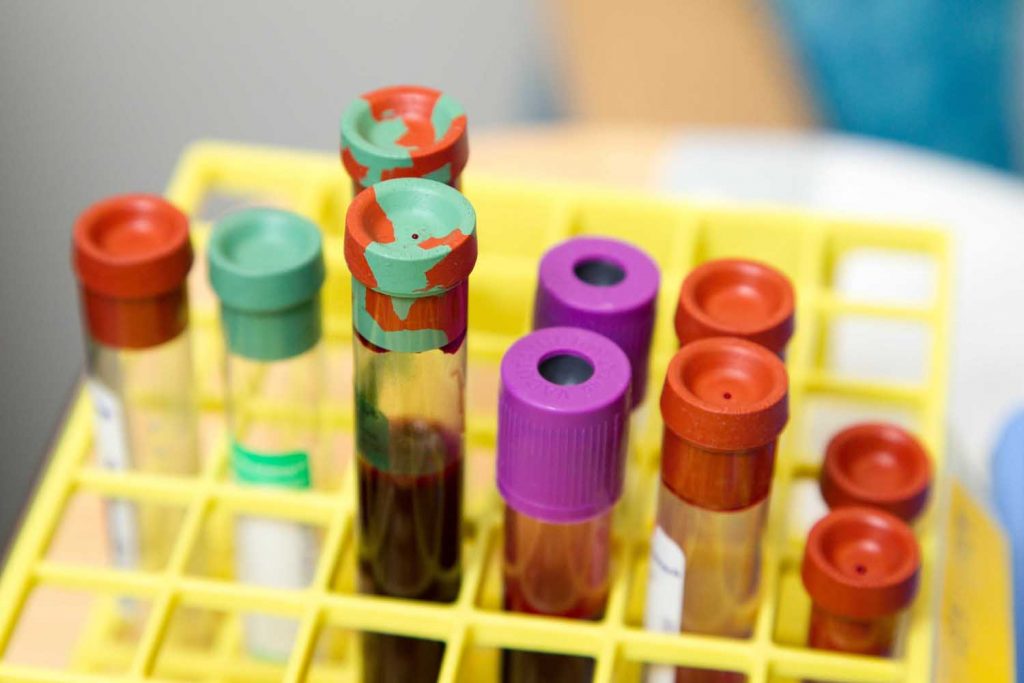
Alpha Thalassemia
Thalassemia is an inherited disorder that affects the production of normal haemoglobin (a type of protein in red blood cells that carries oxygen to the tissues of the body).
Anaemia of Folate Deficiency
Anaemia of Folate Deficiency is the lack of folic acid (one of the B vitamins) in the blood, which can cause a type of anaemia known as megaloblastic (pernicious) anaemia.
Anaemias
There are many types of anaemias that require clinical care by a physician or other healthcare professional. Listed in the directory below are some, for which we have provided a brief overview
Aplastic Anaemia
Aplastic anaemia occurs when the bone marrow produces too few of all three types of blood cells: red blood cells, white blood cells, and platelets. A reduced number of red blood cells causes haemoglobin to drop. A reduced number of white blood cells makes the patient susceptible to infection. A reduced number of platelets causes the blood not to clot as easily.
Beta Thalassemia (Cooley's Anaemia)
Beta thalassemia is caused by mutations in the beta chain of the haemoglobin molecule. There are two types of Beta Thalassemia: beta thalassemia major (Cooley’s anaemia) – both (two) beta chain genes have deletions, causing the most severe type of beta thalassemia. Thalassemia major patients need frequent blood transfusions and may not survive a normal lifespan. During the first one to two years of life, they can be pale, fussy, have a poor appetite, and have many infections. Without treatment, the spleen, liver, and heart become enlarged, and bones can become thin and brittle. A major problem is the build-up of iron in the heart and other organs, resulting in heart failure for some patients in their teens or early 20s. Halassemia minor or thalassemia trait – one beta gene has a deletion, resulting in anaemia. Thalassemia minor is further divided into: thalassemia minima – person has few or no symptoms. thalassemia intermedia – person has moderate to severe anaemia.
Bleeding / Clotting Disorders
Abnormalities in platelets, the coagulation factors that regulate fibrin formation, or defects in the blood vessels themselves, can lead to excessive bleeding. Similarly, excess clotting can cause problems by obstructing veins and arteries (thrombosis). Listed in the directory below, you will find additional information regarding three different types of coagulation disorders, for which we have provided a brief overview.
Blood Disorders
There are many Haematology & Blood Disorders that require clinical care by a physician or other healthcare professional. Listed in the directory below are some, for which we have provided a brief overview
Deep Vein Thrombosis (DVT) / Thrombophlebitis
Deep vein thrombosis (DVT) occurs when a blood clot develops in a vein deep in the body
G6PD (Glucose-6-Phosphate Dehydrogenase) Deficiency
G6PD deficiency is the lack of glucose-6-phosphate dehydrogenase (an enzyme present in red blood cells) in the blood, which can cause a type of anaemia known as haemolytic anaemia
Haemolytic Anaemia
Haemolytic anaemia is a disorder in which the red blood cells are destroyed faster than the bone marrow can produce them
Haemophilia
Haemophilia is an inherited bleeding, or coagulation, disorder. Children with haemophilia lack the ability to stop bleeding because of the low levels, or complete absence, of specific proteins, called “factors,” in their blood that are necessary for clotting.
Idiopathic Thrombocytopenic Purpura
TP is a blood disorder characterized by an abnormal decrease in the number of platelets in the blood
Polycythaemia Vera
Polycythaemia vera is a rare blood disorder in which there is an increase in all blood cells, particularly red blood cells.
Megaloblastic (Pernicious) Anaemia
Megaloblastic anaemia is a type of anaemia characterized by very large red blood cells.
Sickle Cell Disease
Sickle cell disease is an inherited blood disorder characterized by defective haemoglobin (a protein in red blood cells that carries oxygen to the tissues of the body).
Thalassemias
Thalassemia is an inherited disorder that affects the production of normal haemoglobin (a type of protein in red blood cells that carries oxygen to the tissues in the body).
Thrombocythemia
Thrombocythemia is a myeloproliferative disorder. It is characterized by the production of too many platelets in the bone marrow.
